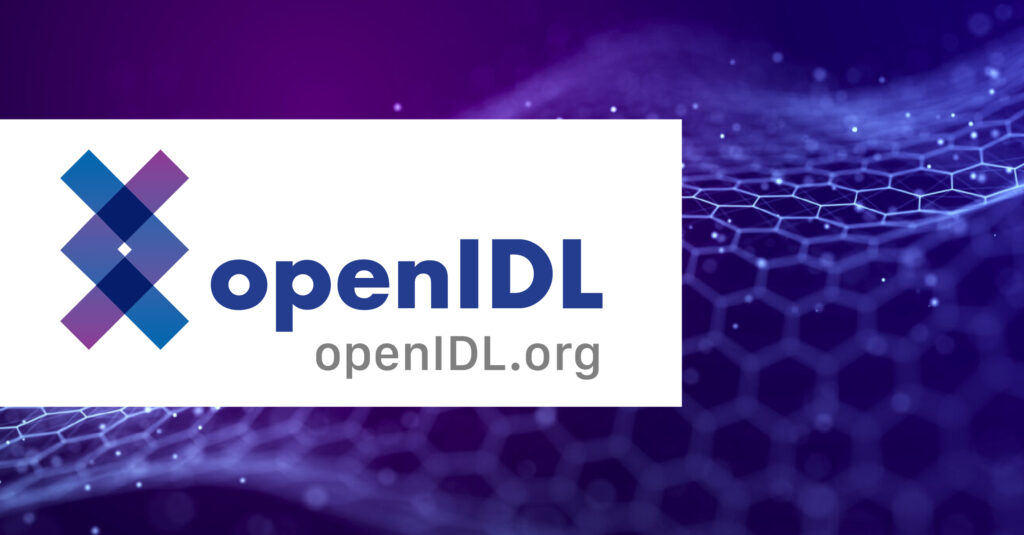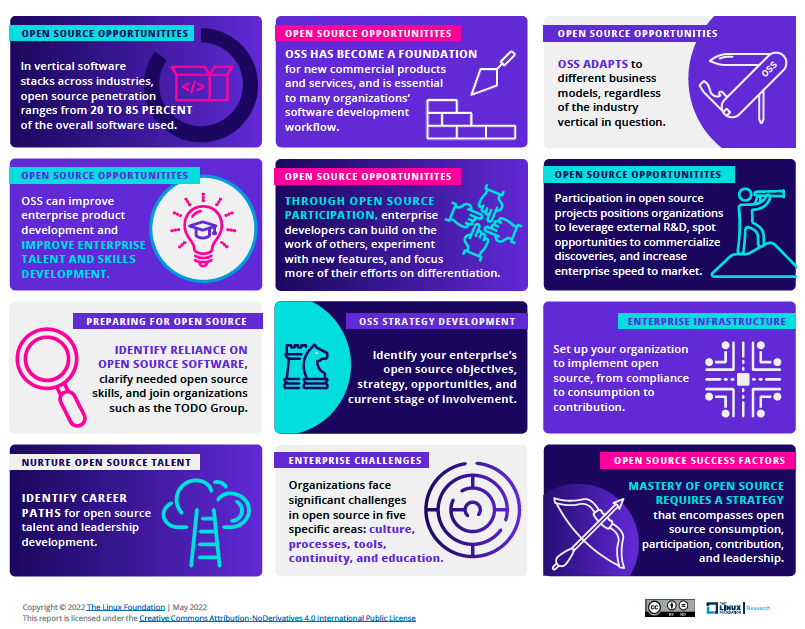The term is widely circulated and referenced across most every industry and can be assumed as self explanatory, but what is open source, really?

Open source (OS) or open source software (OSS) is code designed to be publicly accessible, transparent, and easily modified, enhanced, and/or distributed. OSS is developed in a decentralized manner in which collaboration and peer review are essential and a consortium is formed to sustain production and health of technologies. Open source is, simply put, something/anything folks can view, modify, and share within the agreed upon standards of the community and is either publicly accessible or permissioned.
With the elimination of proprietary ownership, open source consortia often produce cheaper, longer lasting, and more flexible, stable, and secure infrastructure quality; solving for ubiquitous, industry-wide problems and accelerating needed industry innovation.
“Today, OSS powers the digital economy and enables scientific and technological breakthroughs that improve our lives. It’s in our phones, our cars, our airplanes, our homes, our businesses, and our governments.
Organizations involved in building products or services involving software, regardless of their specific industry or sector, are likely to adopt OSS and contribute to open source projects deemed critical to their products and services.”
– LF Research Guide to Open Source
Telecommunication Protocols to Web3
The Advanced Research Projects Agency Network (ARPANET), the foundation of what we now call “the Internet”, was formed by researchers and developers in the 1960’s and ‘70’s practicing open and collaborative production that encouraged peer review and open feedback processes building on existing source code. The obvious success of this model, its values, and the groups formed as a result, naturally led to the inception of the Internet in the ‘90s. The rapid growth of the Internet revolution groomed the global dev community to evolve and proliferate the power of open source and its necessity to enterprise success.
Ok, But How Does It Actually Work and Apply to Enterprise?
Open source projects and the communities formed to develop OSS use what is simply called an open source development model. This model entails releasing software under an open source license in which anyone can view, modify, and/or make a copy of the source code that can then be used, modified, and/or adapted for derivative works, making it “decentralized” and inherently promotes open collaboration, innovation, and peer-to-peer production. It’s the “open source way”! You can find and explore some of the best examples of this model on Github and the open source projects/repositories that are hosted by various consortia.
For a clearer view of the connection between open source and enterprise-level applications and use cases, check out the global non-profit organization, Linux Foundation (“LF”). With over 850 open source projects, 17,000+ contributing organizations, 777,000+ developers contributing code, and 76,300,000+ lines of code added weekly, the LF has and continues to maintain the beat of the world’s technological heart.

The organization’s most well-known projects, Linux and Kubernetes (perhaps you’ve heard these words bounce around and have seen the cute penguin – yet don’t really know what they are or what they do), both illuminate the power of open source communities. Kubernetes is the fastest growing open source project in the history of OSS after Linux. Most everything you touch in the technological realm, undoubtedly, has a relationship to one or both of these two open source projects. The internet itself was primarily built on Linux, so, if you are using the internet and/or your mobile phone, you are benefitting, likely tremendously, from open source communities and their developments.
Linux is the largest open source operating system in the world and it’s free! The “Free Software” model is truly organized around the theme of freedom: anyone and everyone can view, modify, redistribute, make the source code available, and can even sell copies of modified code (as long as all applies to the open source license). Linux embodies this model and is governed by an open source license, which prevents restrictions on the use of the software.
The LF is governed, run, and maintained by its members, some of which are the largest global corporations including (but certainly not limited to as there are 14 Platinum, 17 Gold, 1,208 Silver, and 319 Associate members): AT&T, AWS, Cisco, Coinbase, Ethereum, Fujitsu, Google, Hitachi, Huawei, IBM, Intel, Meta, Microsoft, Oracle, Qualcomm, Samsung, Tencent, and VMware.
LF Members that may be of interest to you and the insurance industry are AAIS, AXA, BMW Group, FedEx, Ford, GE, The Hanover, The Hartford, here., Honda, Hyundai & Hyundai MOBIS, KatRisk, KPMG, Mazda, McKinsey & Company, Daimler, Mitsubishi Motors, MOBI, NAIC, Nokia, Nvidia, Octo, PayPal, Progressive, S&P Global, Selective Insurance, SiriusXM, Sprint/T-Mobile, TomTom, Travelers, UBS, USAA, Verizon, VNC Automotive, Volkswagen, and many more including academic, research, and government/state DOIs & regulator associate members.
In addition to hosting open source projects, LF supports its community and members through events, training and certification programs, marketing and PR opportunities, the release of its member-exclusive LFX platform, and much more to ensure member success in their enterprise open source strategy.
“Code is power. Community is strength. We are one.” -Linux Foundation
More to come specifically about the Linux Foundation, “What is the LF?” to be published soon!
What’s In It For You? The Great Paradox.
The tremendous value of open source projects, as opposed to proprietary software and/or data platforms, is in the power of the consortia and communities they form.
“Over many years, new industries and thousands of organizations have entered the open source ecosystem. In the early days, some organizations leapt into OSS without a proper strategy and an execution plan; they did not emerge as winners. Others took a deliberative approach that embraced OSS methodology and engineering practices; they came out as leaders for open source activities in their industries or verticals.” – LF Research Guide to Open Source
Historical proof around the success of enterprise open source lies in the commitment of leadership to their open source strategy that is carefully crafted and implemented. The past indicates that wishy-washy toe-dipping will only leave losses on investment whereas commitment to the model, its implementation as a core element to the business and its operations, as well as a solid strategy to support the power of enterprise-level open source models have been proven to transform the embracing organizations into industry leaders and archetypes.
To build on this, the open source model truly embodies the concept of ‘you get what you give’. The stronger the commitment, the positive levels of increased contribution, the more quality members in the consortium, the clearer the focus on cultivating culture, the better the investment in enterprise strategy… the more overall success will come as a result of adopting open source and setting it as a strategic investment to the overall business.
Next week’s openIDL blog: “Building an Enterprise Open Source Strategy for the Insurance Industry”
The power of open source licensing and the consortium governance is that all users must accept the terms of a license, just as users must for proprietary software; the difference is that the legal terms and conditions for open source software and networks are of a totally different animal, perhaps closer to an antithesis. Why? Because proprietary licenses are generally focused on restrictions of use in accordance with a monetary value, transaction, application(s), and number/level of users/viewers, and how/if the software/data can be distributed and by who to whom.
Open source licenses are generally focused on ensuring that there are no restrictions on users, applications, modifications, or distributions and usually govern that any releases of a modified open source build must release the source code for it as well – again, ensuring that there is no fee attributed to its distribution/licensing. This model is all about sharing, building, and solving problems that no one entity could solve for on its own. The governance of open source is the embodiment of e pluribus unum.
Together We Can Achieve More. To learn how, visit us at openIDL.org.
Stay connected with the openIDL Newsletter

openIDL is a Linux Foundation insurance-focused project built on the enterprise blockchain, Hyperledger Fabric and is the first open source private permissioned-DLT network that enables the efficient, secure, and accurate collection & exchange of relevant industry data.
- Fabric Codebase is modified, optimized, and customized by the openIDL community (carriers, regulators, data providers & operators, and infrastructure partners) to foster solutions specific to the Insurance Industry.
- Anyone can take and use the code of openIDL for their own use case without threatening the security of its members & network.
- The network and its consortium are solving hard industry-wide data problems requiring platform thinking, open source collaboration, and consortium building as all members of openIDL have a stake in the network in different ways.
